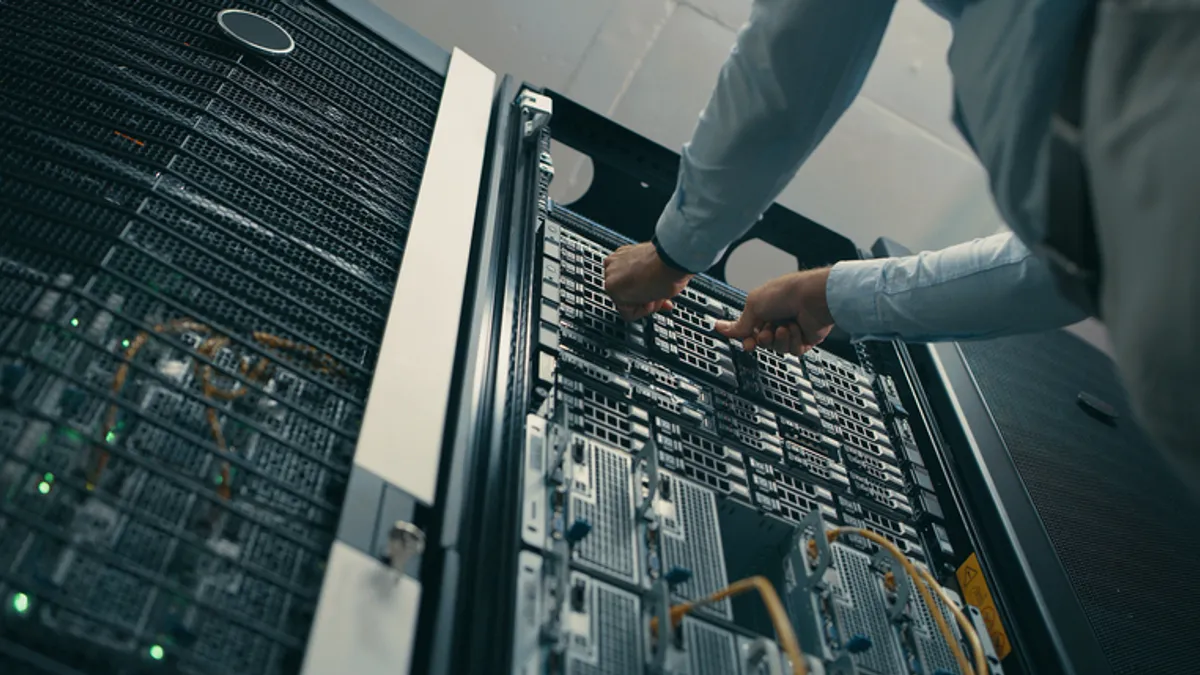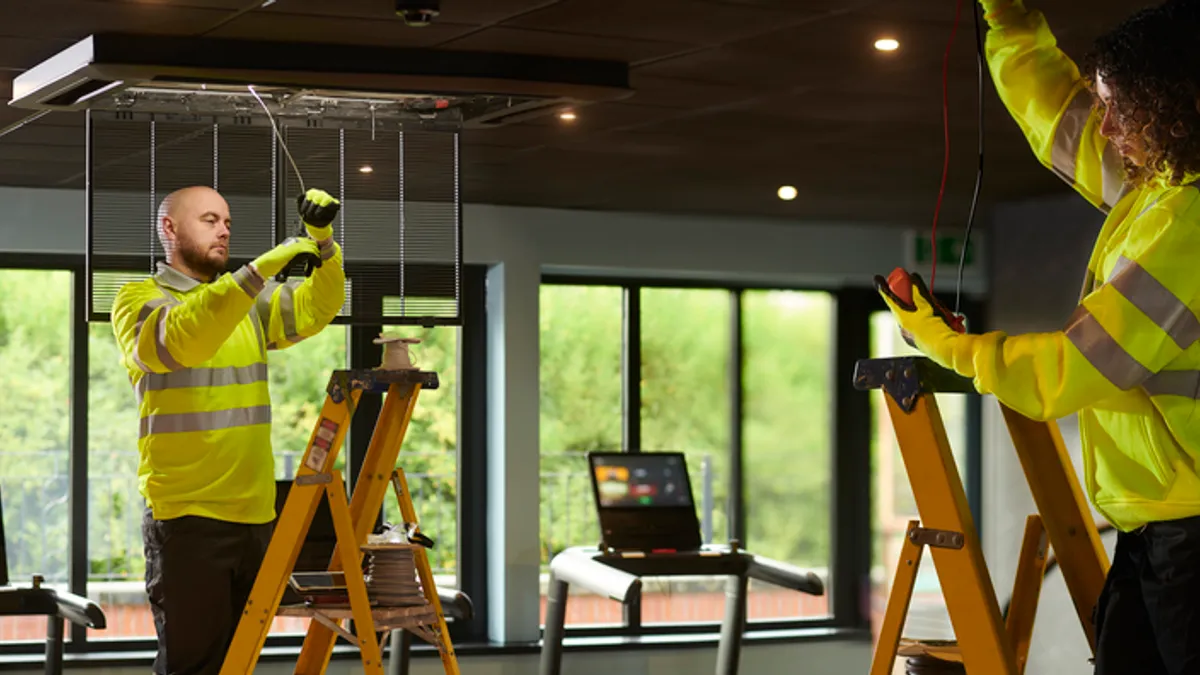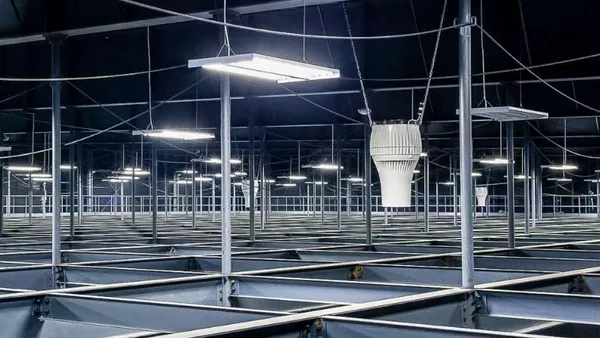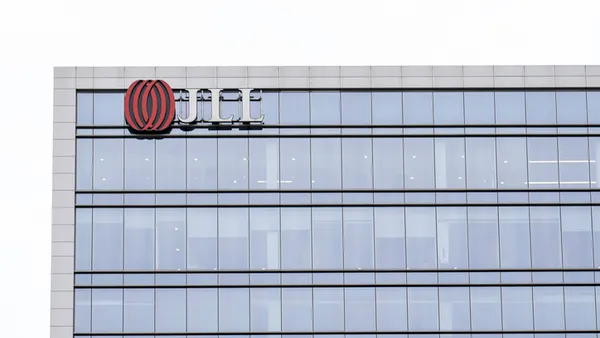Dive Brief:
- Digital infrastructure and analytics provider Vertiv released four solutions in March that it says will help data center operators manage the challenges of increasingly dense, energy-intensive AI and high-performance computing workloads.
- The solutions include consolidated infrastructure management software, a prefabricated modular overhead infrastructure system, a chilled-water heat exchange system and a high-capacity rack power unit.
- “These additions to our portfolio [provide] easier end-to-end systems integration, faster deployment, improved scalability, and greater power and cooling density to address critical digital infrastructure challenges related to accelerated computing,” Scott Armul, executive vice president of global portfolio and business units at Vertiv, said in a statement.
Dive Insight:
Vertiv’s announcement comes as some data center industry analysts are softening their forecasts for near-term growth in the sector.
In January, shares in companies with data center exposure tumbled after Chinese AI developer DeepSeek debuted two models that produced results on par with cutting-edge U.S.-developed models while claiming to use a fraction of the computing power.
Though several industry insiders and analysts told Facilities Dive that compute-efficient models like DeepSeek would buoy the AI sector in the long run, signs of a pullback have mounted. Microsoft abandoned two gigawatts of data center projects in North America and Europe last year amid declining demand forecasts, TD Cowen analysts said on March 26, and recently declined an option to buy nearly $12 billion in data center capacity from CoreWeave, a cloud operator focused on AI workloads.
Following the Microsoft news, CoreWeave reduced the size and pricing of its initial public offering, which took place at the end of March. The move “suggests investors are recalibrating AI infrastructure valuations,” Lukas Muehlbauer, research analyst at IPOX, told Reuters before the IPO.
Meanwhile, Microsoft and Google are delaying orders for new infrastructure and equipment as they redesign their data centers to support server racks with higher power densities, analysts from TD Cowen and Barclays said last week. Third-party operators have also stockpiled equipment to reduce lead times for new data center capacity, creating an “air pocket in equipment ordering” for the next few months that could materially impact suppliers like Vertiv, they said.
Long-term view
By rolling out its solutions to make it easier for data centers to deploy and run new AI and HPC capacity despite these near-term growth concerns, the company appears to have its sites set on the long-term capacity needs of the sector.
Each of the solutions it introduced last week tackles a challenge to the deployment and operation of the digital infrastructure used in data centers.
Simplified installation. To get capacity up and running more quickly, Vertiv’s prefabricated overhead infrastructure solution, known as SmartRun, uses “factory-integrated components and [a] one-lift installation process [that] significantly simplifies installation,” Vertiv Senior Vice President for Global Product Strategy Martin Olsen said in an email.
The overhead solution combines a high-density power distribution busbar, piping for liquid cooling, hot-aisle containment and network infrastructure into a single unit that can be deployed up to 85% faster than the traditional “stick-build” method, where onsite crews assemble components piece by piece, Olsen said.
Better visibility. Vertiv’s Unify infrastructure management solution addresses operational challenges around monitoring, management and control of power and cooling systems by centralizing and streamlining those functions, according to Olsen. “Unify solves these issues by providing real-time visibility, comprehensive control and advanced analytics from a single platform, and reporting insights on energy usage,” he said.
Higher capacity. PowerDirect Rack, Vertiv’s 50-volt direct-current rack power shelf, supports two times the power capacity of conventional alternating-current uninterruptible power systems in the same footprint and can scale up to 132 kilowatts of power per rack, Vertiv says.
Each server rack equipped with NVIDIA’s cutting-edge GB200 chips can consume 120 kW today, but racks running future generations of NVIDIA chips could scale to 600 kW by late 2027, NVIDIA CEO Jensen Huang told Data Center Dynamics.
Greater cooling density. Vertiv’s fourth new solution, CoolLoop RDHx, is a “chilled water high-density rear door heat exchanger” that extends the capabilities of Vertiv’s Liebert DCD thermal management systems, Olsen said. Customers can deploy the “room-neutral” CoolLoop RDHx as a standalone replacement for rear-door air cooling systems or in support of direct-to-chip liquid cooling infrastructure, he said.













